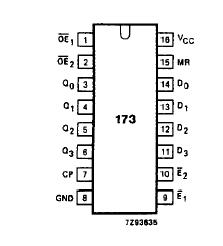74HCT173: Features: · Gated input enable for hold (do nothing) mode· Gated output enable control· Edge-triggered D-type register· Asynchronous master reset· Output capability: bus driver· ICC category: MSIPin...
floor Price/Ceiling Price
- Part Number:
- 74HCT173
- Supply Ability:
- 5000
Price Break
- Qty
- 1~5000
- Unit Price
- Negotiable
- Processing time
- 15 Days
SeekIC Buyer Protection PLUS - newly updated for 2013!
- Escrow Protection.
- Guaranteed refunds.
- Secure payments.
- Learn more >>
Month Sales
268 Transactions
Payment Methods
All payment methods are secure and covered by SeekIC Buyer Protection PLUS.

 74HCT173 Data Sheet
74HCT173 Data Sheet







